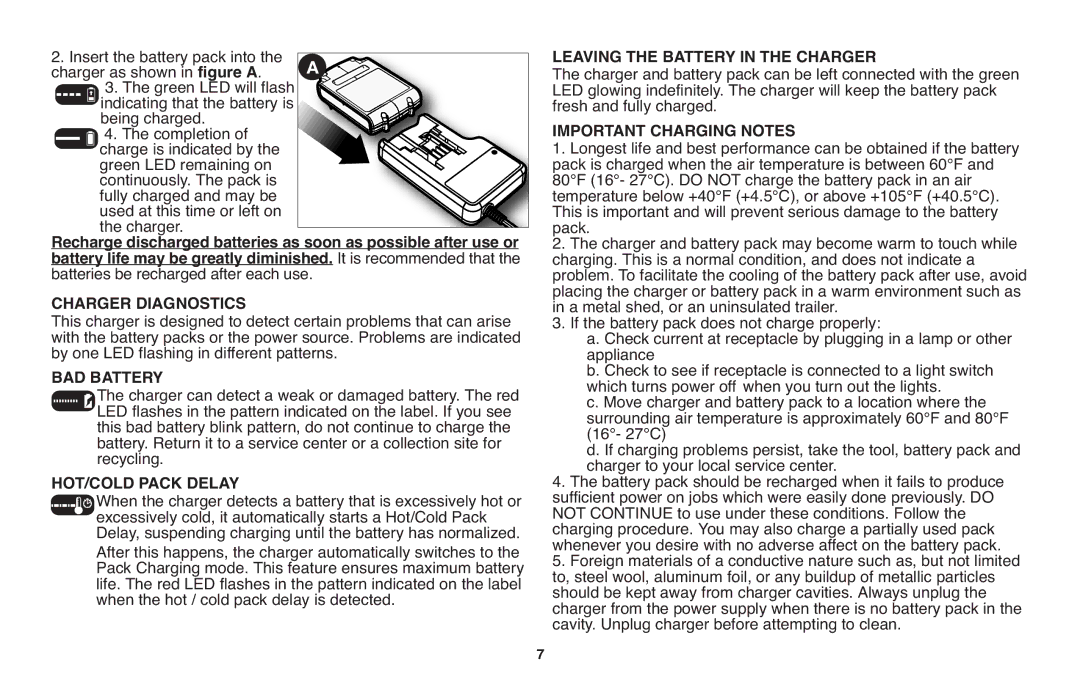LGC120 specifications
The Black & Decker LGC120 and LGC120B are renowned tools designed to simplify lawn care and deliver efficient performance for homeowners and garden enthusiasts. These cordless lithium-ion powered string trimmers combine power, portability, and user-friendly features, making them an excellent choice for tackling various landscaping tasks.One of the standout features of both models is their 20V lithium-ion battery system. This technology provides ample power, allowing for longer run times compared to traditional battery systems. The LGC120 and LGC120B offer the convenience of cordless operation, eliminating the hassle of tangled cords and the need for access to power outlets, enabling users to freely navigate their yards.
The trim and edger function is another significant advantage. With a simple turn of the shaft, users can switch from trimming to edging, optimizing their gardening tasks. This feature is incredibly helpful for maintaining tidy borders along garden beds, driveways, and sidewalks, making the transition seamless and quick.
Weight is crucial when selecting a tool for garden maintenance, and the LGC120 and LGC120B are designed with lightweight materials, ensuring easy maneuverability and reduced fatigue during prolonged use. The adjustable height and pivoting head further enhance user comfort, accommodating various user heights and enabling precise trimming along uneven surfaces.
Moreover, both models incorporate automatic feed spool technology, allowing for hassle-free line advancement. This means users do not have to stop or manually feed the line, resulting in an uninterrupted working experience. The dual-line system provides a more efficient cutting capability, ensuring a cleaner finish and allowing for faster completion of lawn tasks.
Safety features are also incorporated into the design. The safety guard protects users from debris and ensures a safer operation, providing peace of mind while working.
In summary, the Black & Decker LGC120 and LGC120B are efficient, powerful, and user-friendly tools ideal for homeowners looking to maintain their lawns effectively. The combination of cordless convenience, powerful lithium-ion battery technology, and innovative features makes these models stand out in the lawn care equipment market, enhancing the overall gardening experience.

